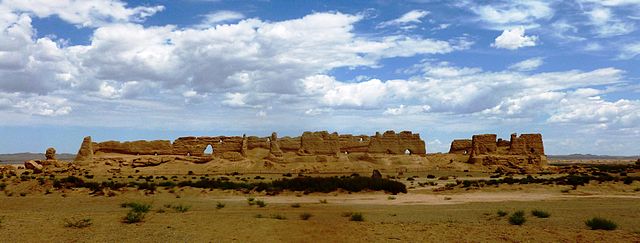
| GANSU
Zhangye National Geopark
Jiayu Pass
Labrang Monastery
Crescent Lake
Mogao Caves
Map showing the location of Gansu Province Gansu (alternately romanized as Kansu) is a landlocked province in Northwest China. Its capital and largest city is Lanzhou, in the southeast part of the province.
The seventh-largest administrative district by area at 453,700 square kilometres (175,200 sq mi), Gansu lies between the Tibetan and Loess plateaus and borders Mongolia (Govi-Altai Province), Inner Mongolia and Ningxia to the north, Xinjiang and Qinghai to the west, Sichuan to the south and Shaanxi to the east. The Yellow River passes through the southern part of the province. Part of Gansu's territory is located in the Gobi Desert. The Qilian mountains are located in the south of the Province.
Gansu has a population of 26 million, ranking 22nd in China. Its population is mostly Han, along with Hui, Dongxiang and Tibetan minorities. The most common language is Mandarin. Gansu is among the poorest administrative divisions in China, ranking 31st, last place, in GDP per capita as of 2019. Most of Gansu's economy is based on the mining industry and the extraction of minerals, especially rare earth elements. Tourism also plays a role in Gansu's economy.
The State of Qin originated in what is now southeastern Gansu and went on to form the first known Empire in what is now China. The Northern Silk Road ran through the Hexi Corridor, which passes through Gansu, resulting in it being an important strategic outpost and communications link for the Chinese empire.
The city of Jiayuguan, the second most populated city in Gansu, is known for its section of the Great Wall and the Jiayuguan Pass fortress complex.
Name
:
Gansu is abbreviated as (Gan) or (Long), and was also known as Longxi ('"[land] west of Long"') or Longyou ('"[land] right of Long"') prior to early Western Han dynasty, in reference to the Long Mountain (the modern day Liupan Mountain's southern section) between eastern Gansu and western Shaanxi.[citation needed]
History :
The ruins of a Han dynasty (202 BC – 220 AD) Chinese watchtower made of rammed earth at Dunhuang, Gansu province, the eastern edge of the Silk Road Gansu's name is a compound name first used during the Song dynasty. It is a combination of the names of two prefecture in the Sui and Tang dynasty: Gan (around Zhangye) and Su (around Jiuquan). Its eastern part forms part of one of the cradles of ancient Chinese civilisation.
Ancient
Gansu :
The Yuezhi originally lived in the very western part of Gansu until they were forced to emigrate by the Xiongnu around 177 BCE.
The State of Qin, known in China as the founding state of the Chinese empire, grew out from the southeastern part of Gansu, specifically the Tianshui area. The Qin name is believed to have originated, in part, from the area. Qin tombs and artifacts have been excavated from Fangmatan near Tianshui, including one 2200-year-old map of Guixian County.
Imperial era :
Xindian culture era jar with two lug handles uncovered in Gansu, dating to around 1,000 BC
The ruins of a gate at Yumen Pass, built during the Jin dynasty (265 – 420) In imperial times, Gansu was an important strategic outpost and communications link for the Chinese empire, as the Hexi Corridor runs along the "neck" of the province. The Han dynasty extended the Great Wall across this corridor, building the strategic Yumenguan (Jade Gate Pass, near Dunhuang) and Yangguan fort towns along it. Remains of the wall and the towns can be found there. The Ming dynasty built the Jiayuguan outpost in Gansu. To the west of Yumenguan and the Qilian Mountains, at the northwestern end of the province, the Yuezhi, Wusun, and other nomadic tribes dwelt (Shiji 123), occasionally figuring in regional imperial Chinese geopolitics.
By the Qingshui treaty, concluded in 823 between the Tibetan Empire and the Tang dynasty, China lost much of western Gansu province for a significant period.
After the fall of the Uyghur Khaganate, a Buddhist Yugur (Uyghur) state called the Ganzhou Uyghur Kingdom was established by migrating Uyghurs from the Khaganate in part of Gansu that lasted from 848 to 1036 AD.
Along the Silk Road, Gansu was an economically important province, as well as a cultural transmission path. Temples and Buddhist grottoes such as those at Mogao Caves ('Caves of the Thousand Buddhas') and Maijishan Caves contain artistically and historically revealing murals. An early form of paper inscribed with Chinese characters and dating to about 8 BC was discovered at the site of a Western Han garrison near the Yumen pass in August 2006.
The Xixia or Western Xia dynasty controlled much of Gansu as well as Ningxia.
The province was also the origin of the Dungan Revolt of 1862–77. Among the Qing forces were Muslim generals, including Ma Zhan'ao and Ma Anliang, who helped the Qing crush the rebel Muslims. The revolt had spread into Gansu from neighbouring Qinghai.
There was another Dungan revolt from 1895 to 1896.
Jiayuguan Fort :
As a result of frequent earthquakes, droughts and famines, the economic progress of Gansu was significantly slower than that of other provinces of China until recently. Based on the area's abundant mineral resources it has begun developing into a vital industrial center. An earthquake in Gansu at 8.6 on the Richter scale killed around 180,000 people mostly in the present-day area of Ningxia in 1920, and another with a magnitude of 7.6 killed 275 in 1932.
The Muslim Conflict in Gansu (1927–1930) was a conflict against the Guominjun.
While the Muslim General Ma Hongbin was acting chairman of the province, Muslim General Ma Buqing was in virtual control of Gansu in 1940. Liangzhou District in Wuwei was previously his headquarters in Gansu, where he controlled 15 million Muslims. Xinjiang came under Kuomintang (Nationalist) control after their soldiers entered via Gansu. Gansu's Tienshui was the site of a Japanese-Chinese warplane fight.
Gansu was vulnerable to Soviet penetration via Xinjiang. Gansu was a passageway for Soviet supplies during the Second Sino-Japanese War. Lanzhou was a destination point via a road coming from Dihua (Ürümqi). Lanzhou and Lhasa were designated to be recipients of a new railway.[when?]
The Kuomintang Islamic insurgency in China (1950–1958) was a prolongation of the Chinese Civil War in several provinces including Gansu.
Geography :
Danxia landform in Zhangye Gansu has an area of 454,000 square kilometres (175,000 sq mi), and the vast majority of its land is more than 1,000 metres (3,300 ft) above sea level. It lies between the Tibetan Plateau and the Loess Plateau, bordering Mongolia (Govi-Altai Province) to the northwest, Inner Mongolia and Ningxia to the north, Shaanxi to the east, Sichuan to the south, and Xinjiang to the west. The Yellow River passes through the southern part of the province. The province contains the geographical centre of China, marked by the Center of the Country Monument at 35°50'40.9 N 103°27'7.5 E.
Part of the Gobi Desert is located in Gansu, as well as small parts of the Badain Jaran Desert and the Tengger Desert.
Gobi Desert The Yellow River gets most of its water from Gansu, flowing straight through Lanzhou. The area around Wuwei is part of Shiyang River Basin.
The landscape in Gansu is very mountainous in the south and flat in the north. The mountains in the south are part of the Qilian Mountains, while the far western Altyn-Tagh contains the province's highest point, at 5,830 metres (19,130 ft).
A natural land passage known as Hexi Corridor, stretching some 1,000 kilometres (620 mi) from Lanzhou to the Jade Gate, is situated within the province. It is bound from north by the Gobi Desert and Qilian Mountains from the south.
Gansu generally has a semi-arid to arid continental climate (Köppen BSk or BWk) with warm to hot summers and cold to very cold winters, although diurnal temperature ranges are often so large that maxima remain above 0 °C (32 °F) even in winter. However, due to extreme altitude, some areas of Gansu exhibit a subarctic climate (Dwc) – with winter temperatures sometimes dropping to -40 °C (-40 °F). Most of the limited precipitation is delivered in the summer months: winters are so dry that snow cover is confined to very high altitudes and the snow line can be as high as 5,500 metres (18,040 ft) in the southwest.
Crescent Lake, Dunhuang
Qilian Mountains southeast of Jiuquan
Terrace farms near Tianshui
Grasslands in Min County
Wetland by the Yellow River, Maqu County Administrative
divisions :
Administrative divisions of Gansu The fourteen Prefecture of Gansu are subdivided into 82 county-level divisions (17 districts, 4 county-level cities, 58 counties, and 3 autonomous counties).
Politics :
Secretaries of the CPC Gansu Committee: The Secretary of the CPC Gansu Committee is the highest-ranking office within Gansu Province.
1.
Zhang Desheng : 1949–1954
1.
Wang Shitai : 1949–1950
The Yellow River in Lanzhou seen from the park of the White Pagoda Agricultural production includes cotton, linseed oil, maize, melons (such as the honeydew melon, known locally as the Bailan melon or "Wallace" due to its introduction by US vice president Henry A. Wallace), millet, and wheat. Gansu is known as a source for wild medicinal herbs which are used in Chinese medicine. However, pollution by heavy metals, such as cadmium in irrigation water, has resulted in the poisoning of many acres of agricultural land. The extent and nature of the heavy metal pollution is considered a state secret.
However, most of Gansu's economy is based on mining and the extraction of minerals, especially rare earth elements. The province has significant deposits of antimony, chromium, coal, cobalt, copper, fluorite, gypsum, iridium, iron, lead, limestone, mercury, mirabilite, nickel, crude oil, platinum, troilite, tungsten, and zinc among others. The oil fields at Yumen and Changqing are considered significant.
Gansu has China's largest nickel deposits accounting for over 90% of China's total nickel reserves.[citation needed]
Industries other than mining include electricity generation, petrochemicals, oil exploration machinery, and building materials.
According to some sources, the province is also a center of China's nuclear industry.
Despite recent growth in Gansu and the booming economy in the rest of China, Gansu is still considered to be one of the poorest provinces in China. Its nominal GDP for 2017 was about 767.7 billion yuan (US$113.70 billion) and per capita of 29,326 RMB (US$4,343). Tourism has been a bright spot in contributing to Gansu's overall economy. As mentioned below, Gansu offers a wide variety of choices for national and international tourists.
As stipulated in the country's 12th Five Year Plan, the local government of Gansu hopes to grow the province's GDP by 10% annually by focusing investments on five pillar industries: renewable energy, coal, chemicals, nonferrous metals, pharmaceuticals and services.[citation needed]
Economic
and technological development zones :
•
Lanzhou National
Economic and Technological Development Zone was established in 1993,
located in the center of Lanzhou Anning District. The zone has a
planned area of 9.53 km2 (3.68 sq mi). 17 colleges, 11 scientific
research institutions, 21 large and medium-size companies and other
1735 enterprises have been set up in the zone. Main industries include
textile mills, rubber, fertilizer plants, oil refinery, petrochemical,
machinery, and metallurgical industry.
Lanzhou city Languages
:
Culture
:
Religion :
According to a 2012 survey only around 12% of the population of Gansu belongs to organised religions, the largest groups being Buddhists with 8.2%, followed by Muslims with 3.4%, Protestants with 0.4% and Catholic with 0.1% (in total, as of 2012 Christians comprise 0.5% of the population, decreasing from 1.02% in 2004) Around 88% of the population may be either irreligious or involved in worship of nature deities, Buddhism, Confucianism, Taoism, and folk religious sects.
Muslim restaurants are known as "qingzhen restaurants" ("pure truth restaurants"), and feature typical Chinese dishes, but without any pork products, and instead an emphasis on lamb and mutton. Gansu has many works of Buddhist art, including the Maijishan Grottoes. Dunhuang was a major centre of Buddhism in the Middle Ages.
Temple of the Chenghuangshen (City God) of Lanzhou
Nanhua Amituo Fo Temple of Chinese Buddhism seen on a hill above the roofs of the Yu Baba Gongbei, a Sufi shrine
Labrang Monastery of Tibetan Buddhism in Gannan
Village temple in Linxia County
Arch of the Temple of Fuxi in Tianshui Tourism :
A painting of the Buddhist Manjushri, from the Yulin Caves of Gansu, Tangut-led Western Xia dynasty (1038 – 1227 AD)
These
rammed earth ruins of a granary in Hecang Fortress (Pinyin: Hécangchéng),
located ~11 km (7 miles) northeast of the Western-Han-era Yumen
Pass, were built during the Western Han (202 BC – 9 AD) and
significantly rebuilt during the Western Jin (280–316 AD).
An extra brick is said to rest on a ledge over one of the gates. One legend holds that the official in charge asked the designer to calculate how many bricks would be used. The designer gave him the number and when the project was finished, only one brick was left. It was put on the top of the pass as a symbol of commemoration. Another account holds that the building project was assigned to a military manager and an architect. The architect presented the manager with a requisition for the total number of bricks that he would need. When the manager found out that the architect had not asked for any extra bricks, he demanded that the architect make some provision for unforeseen circumstances. The architect, taking this as an insult to his planning ability, added a single extra brick to the request. When the gate was finished, the single extra brick was, in fact, extra and was left on the ledge over the gate.
Mogao
Grottoes :
Silk Road and Dunhuang City :
A terracotta warrior from Gansu, with traces of polychrome and gold, from the Tang dynasty (618 – 907) The historic Silk Road starts in Chang'an and goes to Constantinople. On the way merchants would go to Dunhuang in Gansu. In Dunhuang they would get fresh camels, food and guards for the journey around the dangerous Taklamakan Desert. Before departing Dunhuang they would pray to the Mogao Grottoes for a safe journey, if they came back alive they would thank the gods at the grottoes. Across the desert they would form a train of camels to protect themselves from thieving bandits. The next stop, Kashi (Kashgar), was a welcome sight to the merchants. At Kashi most would trade and go back and the ones who stayed would eat fruit and trade their Bactrian camels for single humped ones. After Kashi they would keep going until they reached their next destination.
Located about 5 km (3.1 mi) southwest of the city, the Crescent Lake or Yueyaquan is an oasis and popular spot for tourists seeking respite from the heat of the desert. Activities includes camel and 4x4 rides.
Silk
Route Museum :
Bingling
Temple :
Labrang
Monastery :
Education
:
Fertile fields near Wuwei Land
:
Energy
:
There is also good potential for wind and solar power development. The Gansu Wind Farm project – already producing 7.965GW in 2015– is expected to achieve 20GW by 2020, at which time it will likely become the world's biggest collective windfarm.
In November 2017 an agreement between the Chinese Academy of Sciences and Gansu government was announced, to site and begin operations of a molten salt reactor pilot project in the province by 2020.
Flora
and fauna :
Gansu's mammals include some of the world's most charismatic: the giant panda, golden monkeys, lynx, snow leopards, sika deer, musk deer, and the Bactrian camel.
Among zoologists who study moles, the Gansu mole is of great interest. For a reason that can only be speculated, it is taxologically a New World mole living among Old World moles: that is to say, an American mole living in a sea of Euro-Asians.
Gansu is home to 441 species of birds; it is a center of endemism and home to many species and subspecies which occur nowhere else in the world.
Gansu is China's second-largest producer of medicinal plants and herbs, including some produced nowhere else, such as the hairy asiabell root, fritillary bulb, and Chinese caterpillar fungus.
Panorama of the lower Daxia River valley in the northeast of the Linxia County, and the loess plateau flanking in, cut by a canyon
Environment : Anti-desertification
project
Space
launch center :
Source :
https://en.wikipedia.org/ |
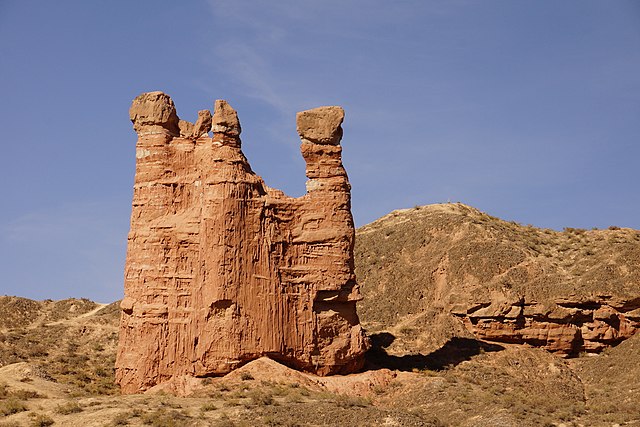
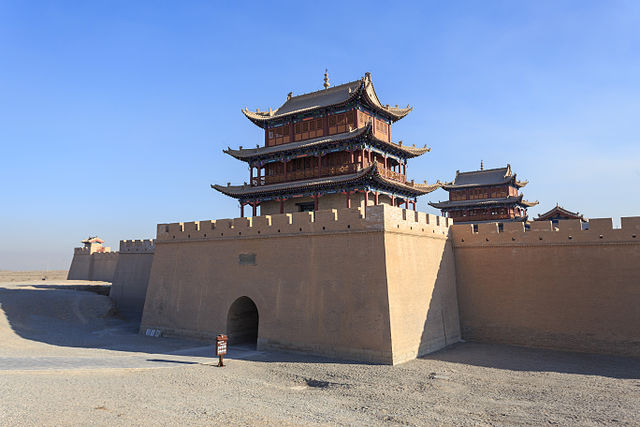

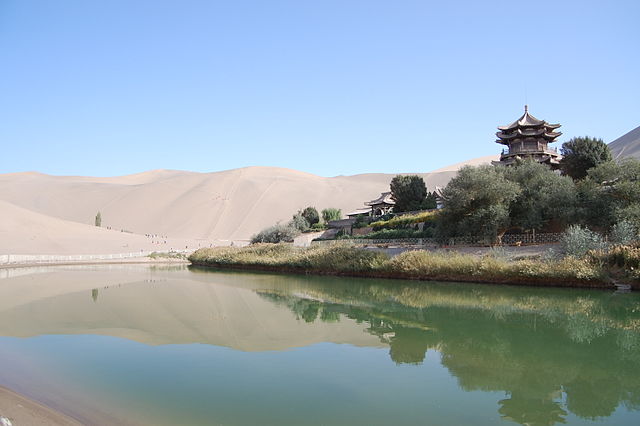
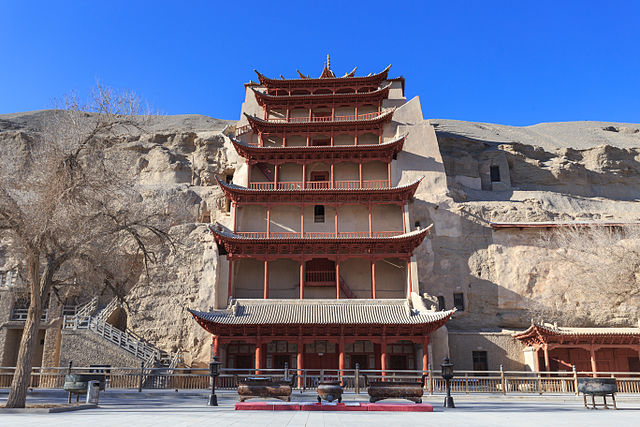
.svg.png)
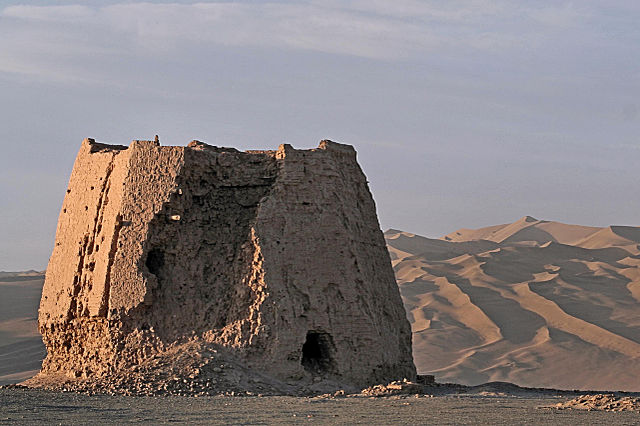
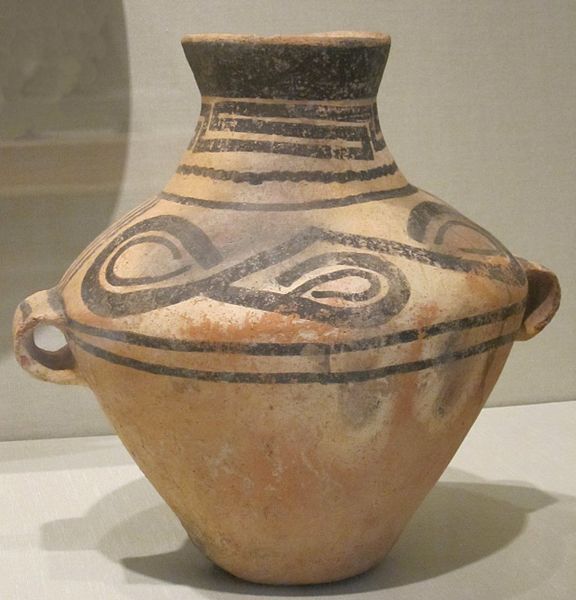
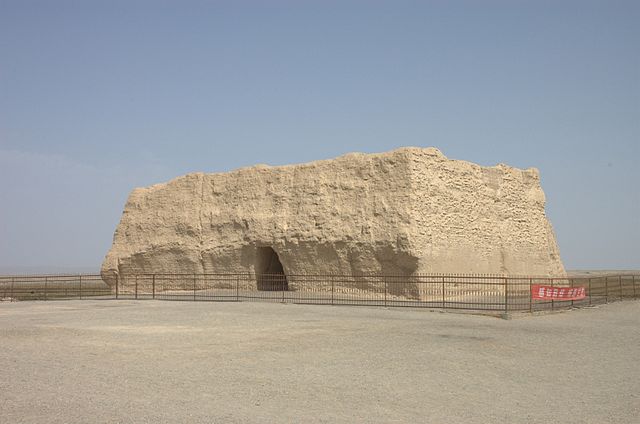
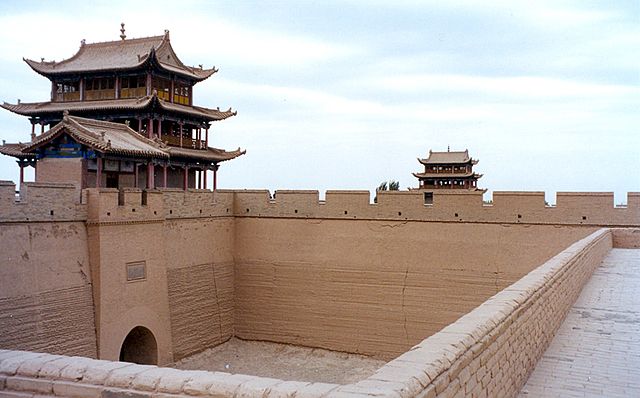
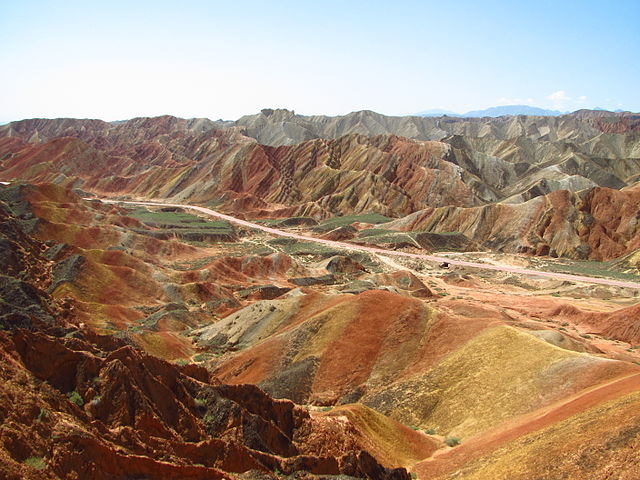
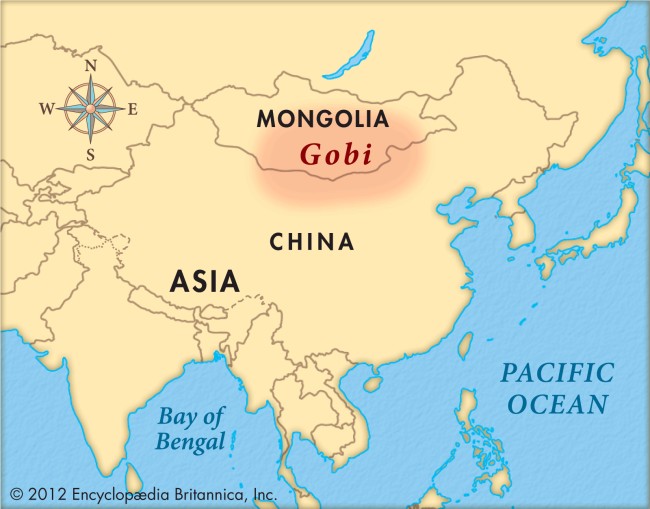
.jpg)



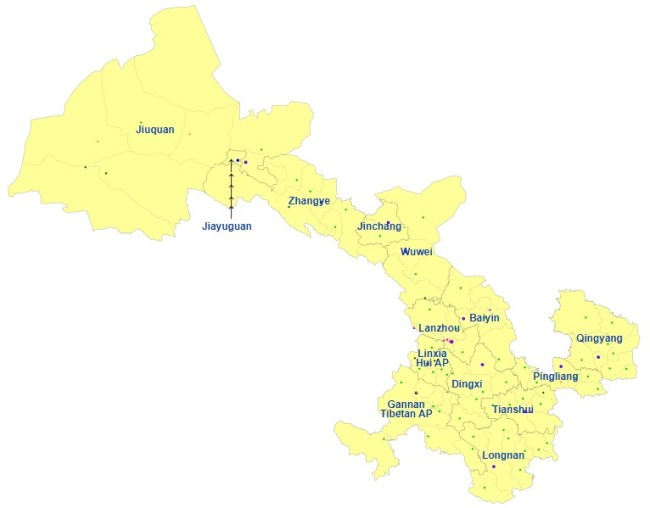
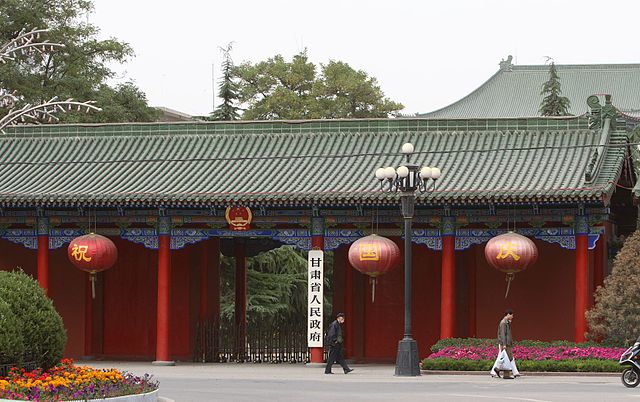
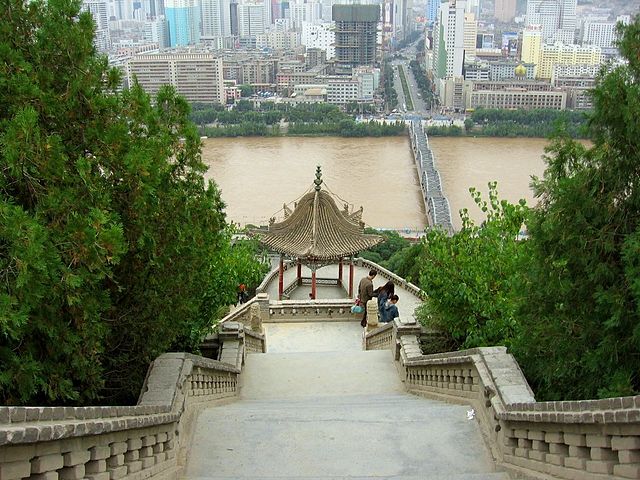
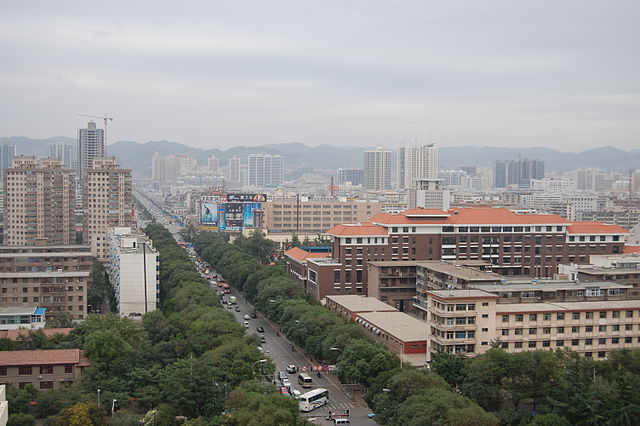

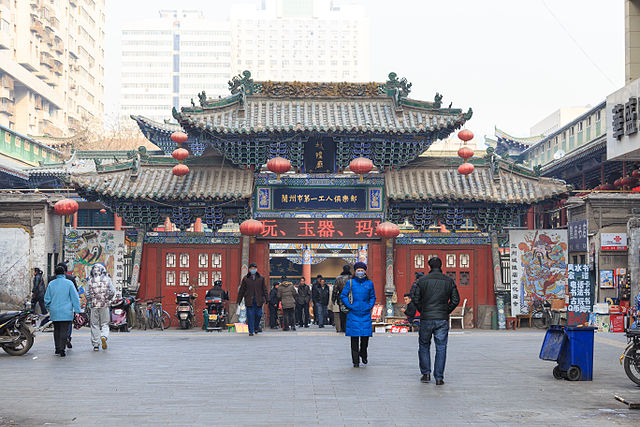
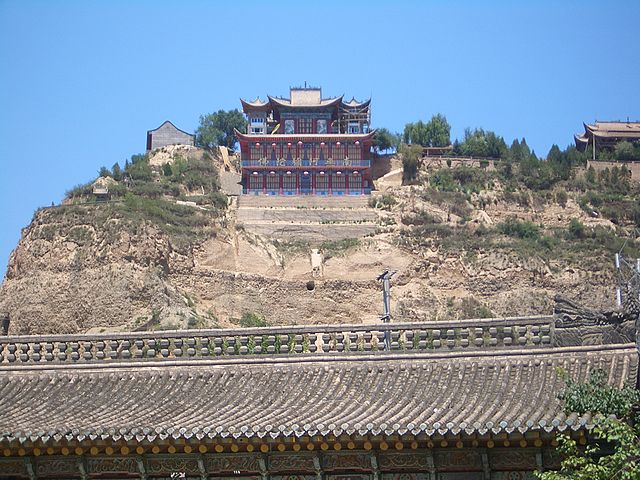

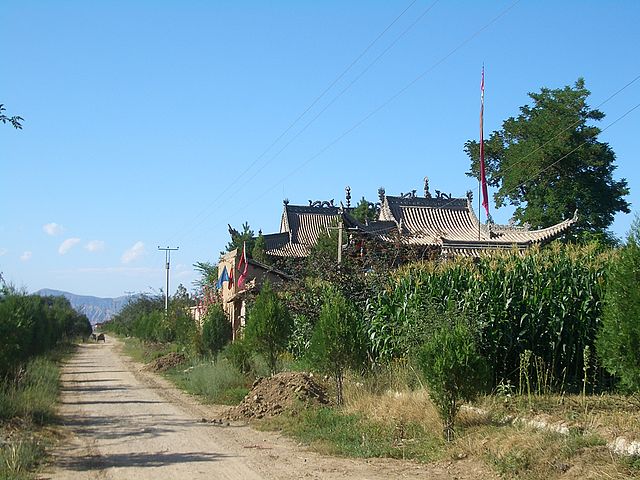

.jpg)
